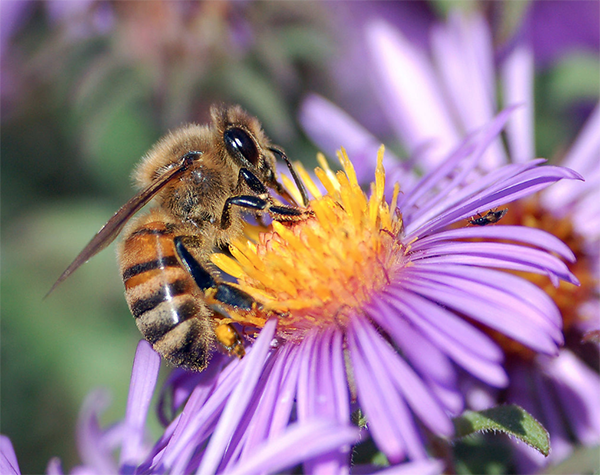News And Advice From The Leading Thousand Oaks Tree Trimming Company
Have you thought about our friend, the honeybee, lately? If you’re making plans for any autumn planting, or even planning for next spring, consider making some choices that are bee friendly.

Why? Well, it hasn’t been too long since the honeybee — or more specifically, the “bee apocalypse” — was making headlines. Starting in the mid 2000’s, a problem called Colony Collapse Disorder began to be widely reported. It continued to be such a problem that between 2014 and 2017, about a quarter of the bees in the nation’s commercial colonies died each winter, quite a bit higher than the 15 percent considered normal until then.
The controversy, of course, really focused on “why.” What caused Colony Collapse Disorder? Theories ranged from a very plausible overuse of pesticides to a pretty wild theory that cell phones were to blame!
Whatever the cause, it’s still nice to take some easy steps to make your yard bee friendly. Having more bees around is a great way to encourage pollination in and around the Conejo Valley. After all, it’s long been established that bees pollinate 85 percent of the world’s flowering plants and 35 percent of the crops we eat.
The trendy phrase these days is “pollinator gardens” — which is simply a yard or garden that features plant species that help spread pollen to reinvigorate the pollinator population.
Basically, there are two types of bee-friendly plants — plants and trees that provide shelter for bees, and flowering plants and trees that bees pollinate.
Whichever type of tree or plant you choose to help out our bees, the rule of thumb is that native plants are your absolute best choice. As a double benefit, native plants in our area also tend to be drought resistant, so here’s a good chance to reduce your water bill at the same time.
For a good choice that fits the bill for the first type — sheltering trees — consider our own native Coast Live Oak. It, like many native oaks, provide shelter for bees and more than 500 pollinator species, who often return for years to come. You better have a large yard for an oak tree, though — a Coast Live Oak can grow up to 75 feet!
We also have a variety of flowering trees that bees love, including Magnolia, Tupelo, Poplar and Tulip trees. Although these trees are not native to our area, they are all suitable for hardiness zones up Zone 9. Remember, the Conejo Valley, depending on the exact area, includes hardiness Zones 9a, 9b and 10. Zone 10 includes our hottest areas such as North Ranch and Oak Park, which may be too much hot for these trees. But you’ll see some healthy Magnolias and such in slightly cooler areas such as Newbury Park. To make your decision easier, simply look around your neighborhood to see which varieties of trees are thriving.
Looking for some other tips to help the pollinators?
- Check with your arborist or a local nursery to determine your soil type and select appropriate plants to suit your soil type.
- Plant smaller shrubs in clusters to create a “target” for pollinators.
- Choose plants that will provide continuous bloom throughout the growing season from spring to fall.
- The best spot to plant bee-friendly landscape is one that is removed from wind, has at least partial sun and provides water.
- If you have a larger yard, devote a section that includes material from dead branches and logs to create natural nesting sites.
- Go easy on the mulch to allow patches of bare ground that will allow ground-nesting bees to flourish.
Need some advice on trimming your trees before winter comes? Give us a call today! (805) 499-9107.

